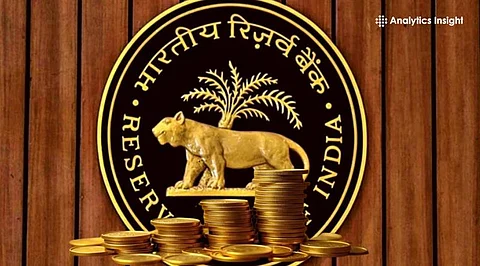Technology
RBI Introduces Silver-Backed Loans to Boost Credit Access

The Reserve Bank of India (RBI) has announced new guidelines allowing silver to be used as collateral for loans, expanding the existing lending framework primarily focused on gold. Under the newly introduced regulations, known as the ‘Reserve Bank of India (Lending Against Gold and Silver Collateral) Directions, 2025,’ individuals will be able to borrow against silver ornaments and coins starting from April 1, 2026. This initiative aims to enhance access to formal credit, particularly for those who may rely on unregulated lending sources.
Who Can Provide Silver-Backed Loans?
The facility will be accessible through a variety of financial institutions, including commercial banks, small finance banks, regional rural banks, cooperative banks, and non-banking financial companies (NBFCs), as well as housing finance companies. Notably, the RBI has established restrictions on the types of silver that can be pledged. Silver bullion in the form of bars or bricks, along with financial assets such as silver exchange-traded funds (ETFs) or mutual fund units, will not be accepted as collateral. This measure is intended to mitigate speculative risks and promote responsible lending practices.
Limits on Silver Pledges and Loan-to-Value Ratios
Borrowers will be permitted to pledge up to 10 kg of silver ornaments and 500 grams of silver coins. In comparison, the limits for gold remain at 1 kg for ornaments and 50 grams for coins. These restrictions ensure that the total amount a borrower can have outstanding remains transparent and accountable.
The RBI has implemented a tiered loan-to-value (LTV) ratio for silver loans. The LTV ratios are categorized as follows:
– For loans up to Rs 2.5 lakh: 85% LTV
– For loans between Rs 2.5 lakh and Rs 5 lakh: 80% LTV
– For loans above Rs 5 lakh: 75% LTV
For example, if the value of the pledged silver is Rs 1 lakh, the borrower could potentially receive a loan of Rs 85,000, depending on the applicable LTV bracket.
Valuation, Repayment, and Default Procedures
The valuation of silver will be determined based on the lower of two figures: the average of the last 30 days’ closing prices or the previous day’s price as published by the India Bullion and Jewellers Association (IBJA) or a recognized exchange by the Securities and Exchange Board of India (SEBI). It is important to note that the valuation will reflect only the intrinsic value of the silver, excluding any gems or decorative elements.
Upon full repayment of the loan, lenders are required to return the pledged silver within seven working days. A penalty of Rs 5,000 per day will be applied for delays in returning the collateral. In case of default, lenders have the right to auction the silver after providing prior notice and establishing a reserve price of at least 90% of the current market value.
Objectives Behind the Introduction of Silver Loans
By extending the loan facility to include silver, the RBI aims to broaden access to formal credit while decreasing reliance on informal lending avenues, such as pawn shops. This strategic move seeks to enhance transparency in collateral-based lending and could potentially serve as a vital source of short-term financing for millions of households in India. As a result, the so-called ‘white metal’ may become a more dependable financial asset alongside gold.
Overall, the RBI’s initiative represents a significant step toward diversifying financial options for individuals and promoting greater financial inclusion through regulated lending practices.
-

 Technology5 months ago
Technology5 months agoDiscover the Top 10 Calorie Counting Apps of 2025
-

 Health2 months ago
Health2 months agoBella Hadid Shares Health Update After Treatment for Lyme Disease
-

 Health3 months ago
Health3 months agoErin Bates Shares Recovery Update Following Sepsis Complications
-

 Technology4 months ago
Technology4 months agoDiscover How to Reverse Image Search Using ChatGPT Effortlessly
-

 Technology1 month ago
Technology1 month agoDiscover 2025’s Top GPUs for Exceptional 4K Gaming Performance
-

 Technology2 months ago
Technology2 months agoElectric Moto Influencer Surronster Arrested in Tijuana
-

 Technology5 months ago
Technology5 months agoMeta Initiates $60B AI Data Center Expansion, Starting in Ohio
-

 Technology5 months ago
Technology5 months agoRecovering a Suspended TikTok Account: A Step-by-Step Guide
-

 Health4 months ago
Health4 months agoTested: Rab Firewall Mountain Jacket Survives Harsh Conditions
-

 Lifestyle5 months ago
Lifestyle5 months agoBelton Family Reunites After Daughter Survives Hill Country Floods
-

 Technology4 months ago
Technology4 months agoHarmonic Launches AI Chatbot App to Transform Mathematical Reasoning
-

 Technology3 months ago
Technology3 months agoUncovering the Top Five Most Challenging Motorcycles to Ride




















